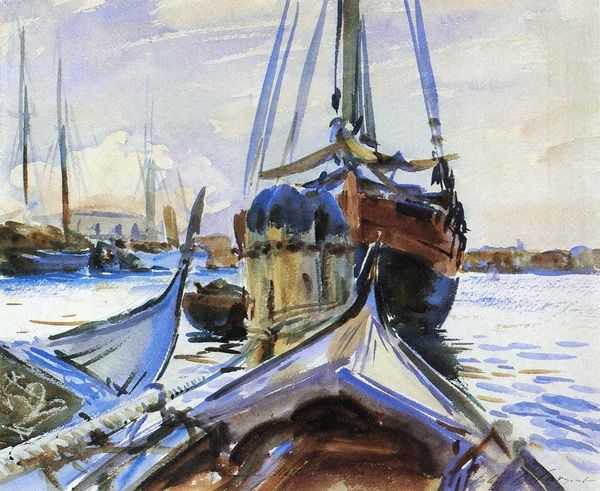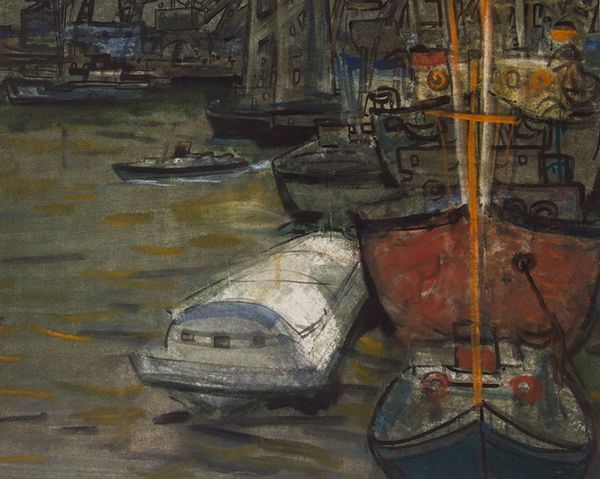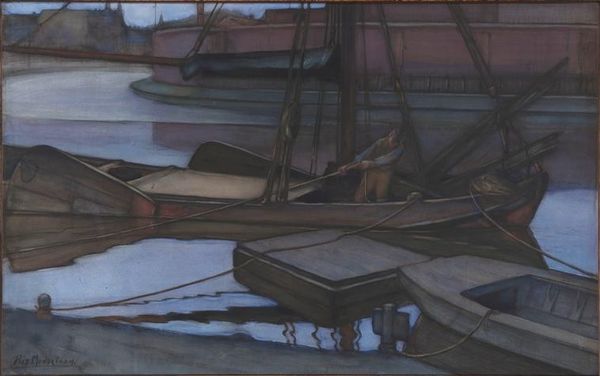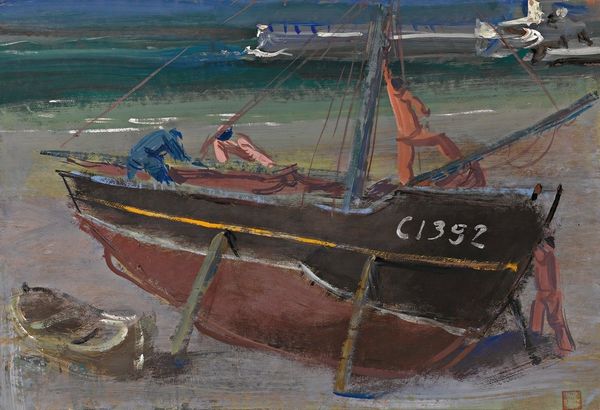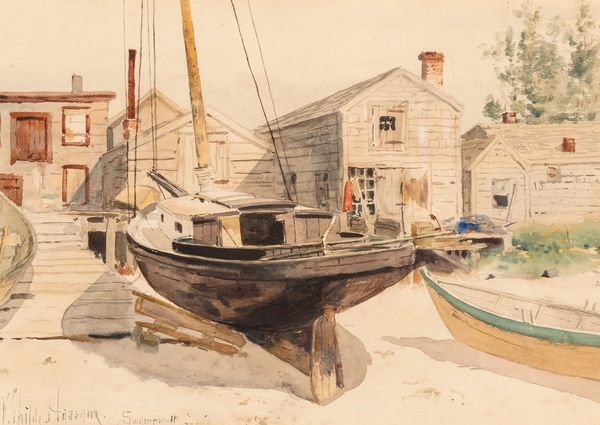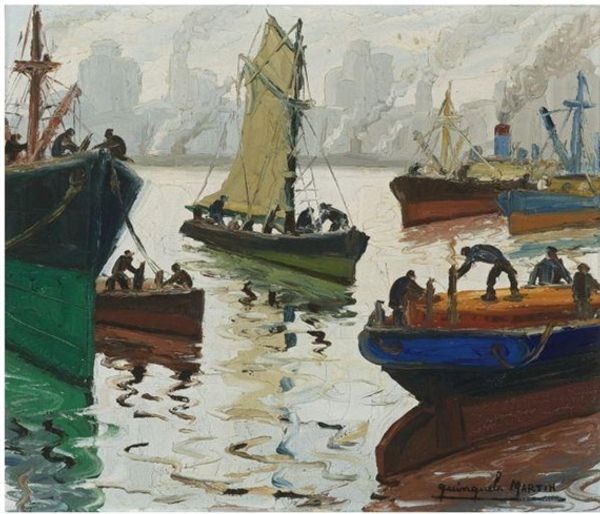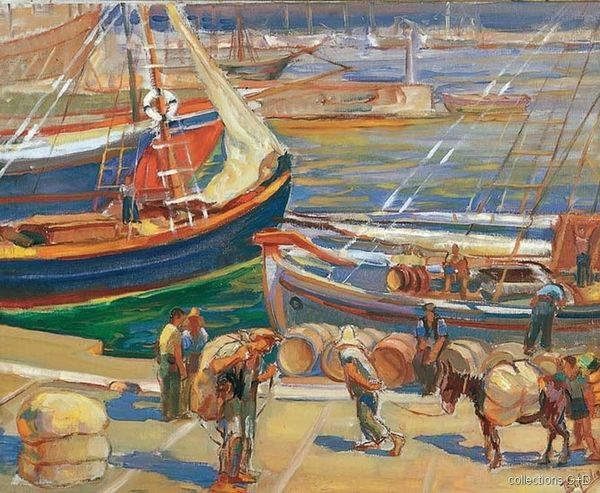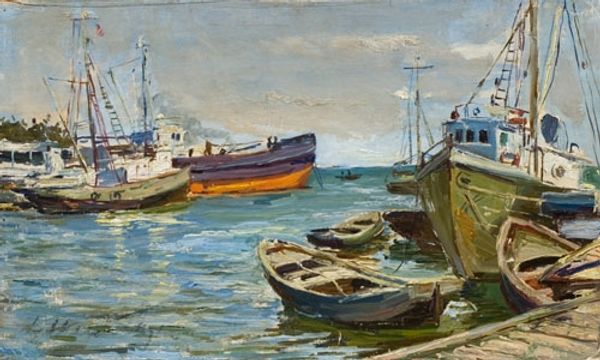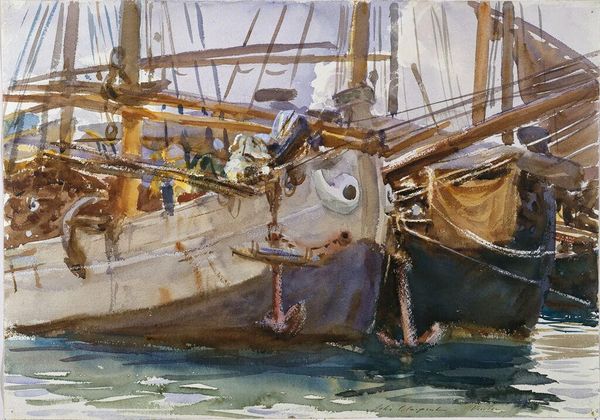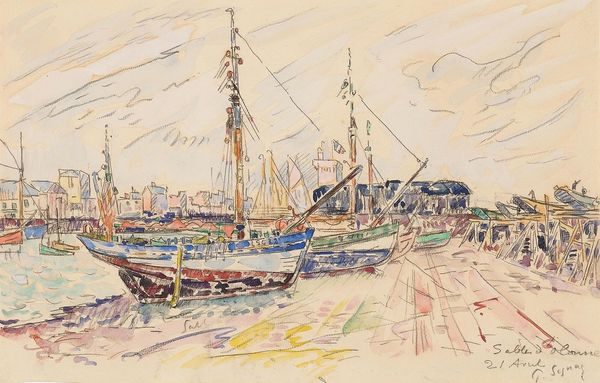
painting, gouache, plein-air, watercolor
#
painting
#
gouache
#
plein-air
#
landscape
#
watercolor
#
post-impressionism
Dimensions: 24 3/4 x 35 5/8 in. (62.87 x 90.49 cm)
Copyright: No Copyright - United States
Piet Mondrian painted ‘Drydock at Durgerdam’ using watercolor and charcoal on paper. Mondrian, born into a rapidly industrializing Netherlands, was deeply influenced by the changing social and economic landscapes of his time. The drydock setting, with its ships undergoing repair, speaks to a culture in transition, caught between tradition and modernity. Look at the boats, temporarily out of service, their raw wooden structures exposed. Are they metaphors for the human condition stripped bare, vulnerable? The artwork’s somber palette evokes a sense of melancholy and introspection. This emotional register invites us to reflect on our own position within society. How do we navigate the tensions between our personal identities and the roles we are expected to fulfill? Mondrian’s exploration of form and space in ‘Drydock at Durgerdam’ reflects his own journey toward abstraction. Through this lens, it resonates with the broader societal shifts of the early 20th century, mirroring the search for meaning in a world transformed by industrialization and social change.
Comments
minneapolisinstituteofart almost 2 years ago
⋮
Conservation of this watercolor was made possible by a generous contribution from Dena and Al Naylor. Before the Dutch painter Piet Mondrian committed himself to avant-garde abstraction in the late 1910s, and became a leading proponent of nonobjective Neo-plasticism, he was an accomplished landscape painter. This watercolor, executed in his mid-20s, represents a shipyard at Durgerdam, a coastal village seven kilometers east of Amsterdam, and shows boats of various shapes and sizes, including, in the foreground, a sailboat dry-docked for repair. It is a colorful scene, and Mondrian’s interest in geometry seems apparent in his emphasis on line, mostly diagonal and highlighted throughout in white, of the buildings, fences, and boat masts. He depicted this dry-docked sailboat at Durgerdam in at least two other works on paper; the Minneapolis version is the largest and most finished of the three.
Join the conversation
Join millions of artists and users on Artera today and experience the ultimate creative platform.
